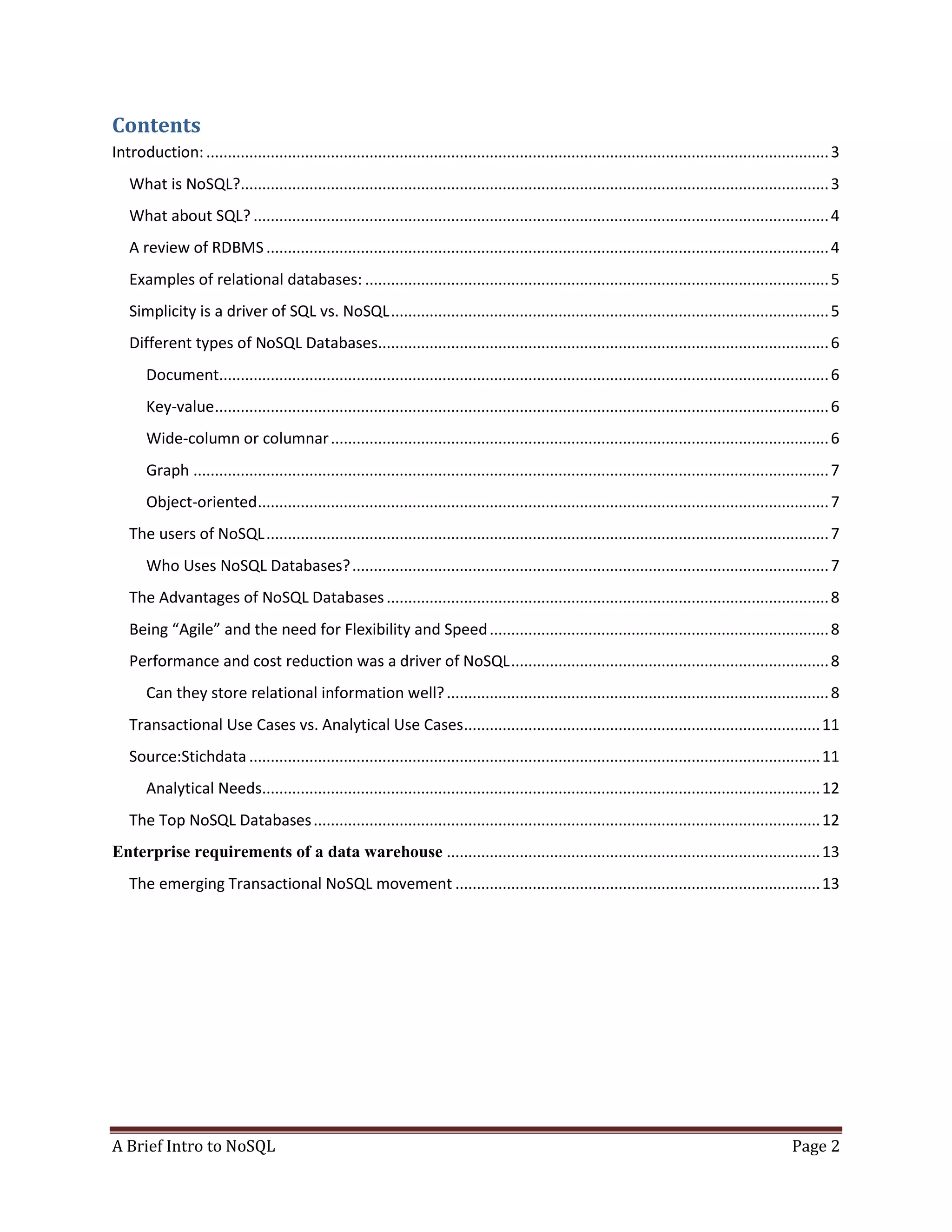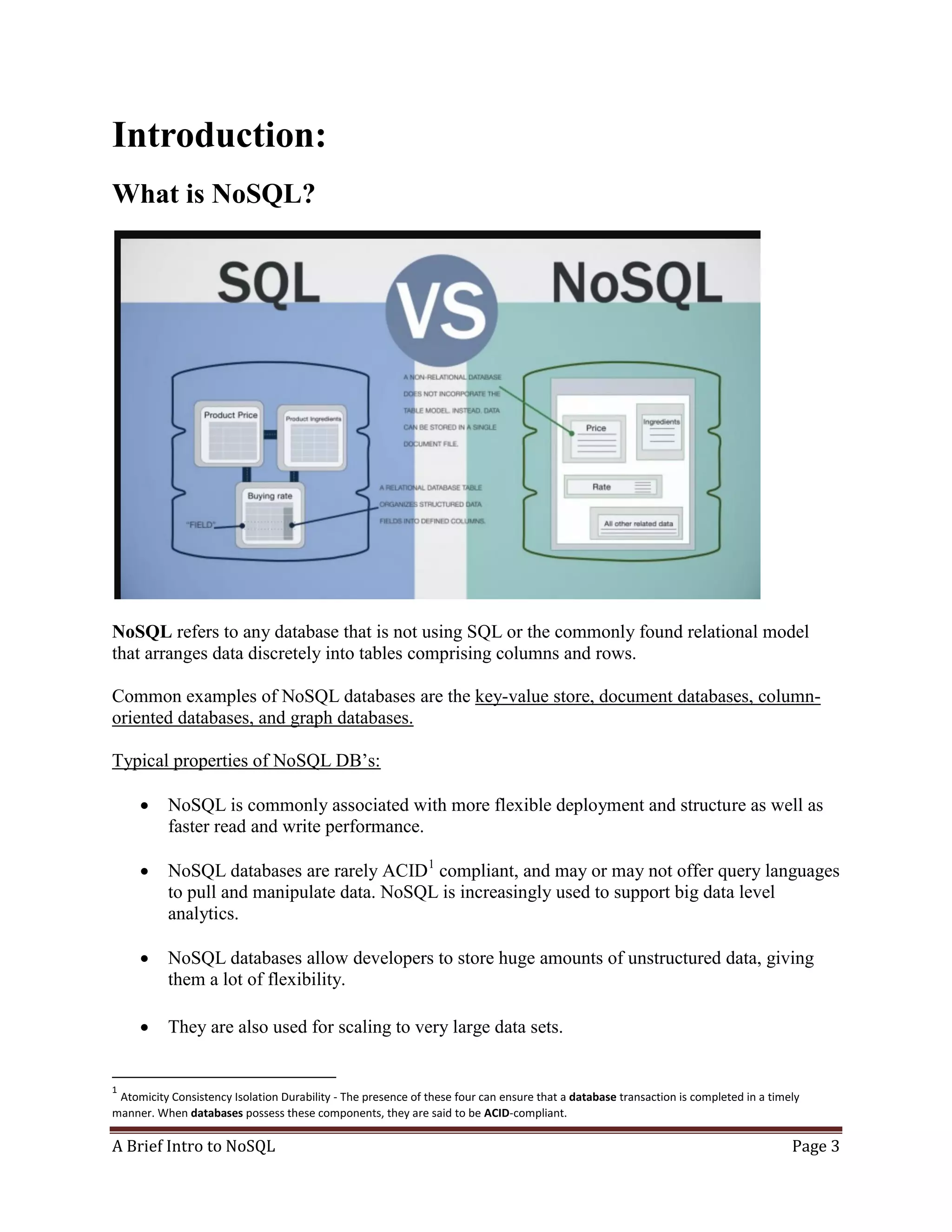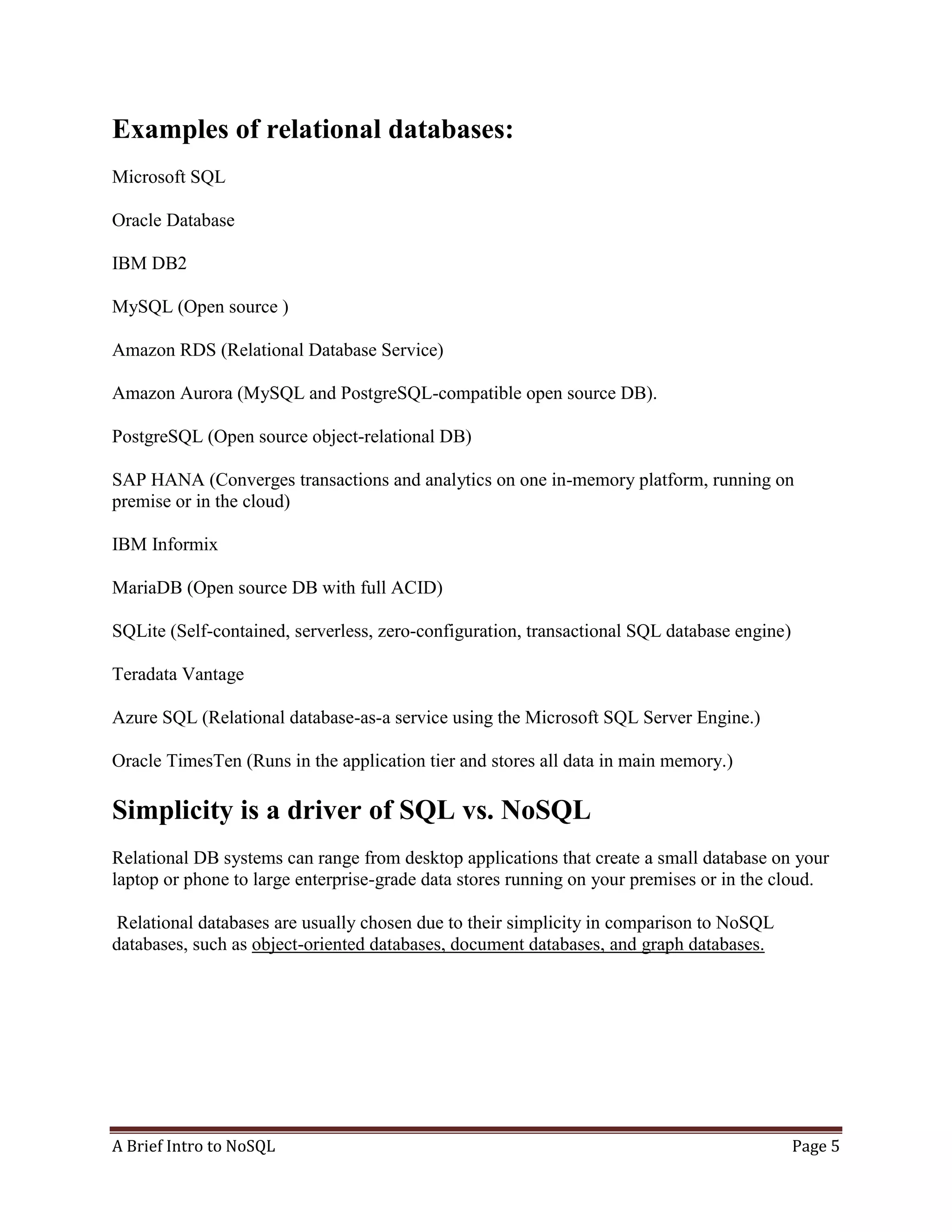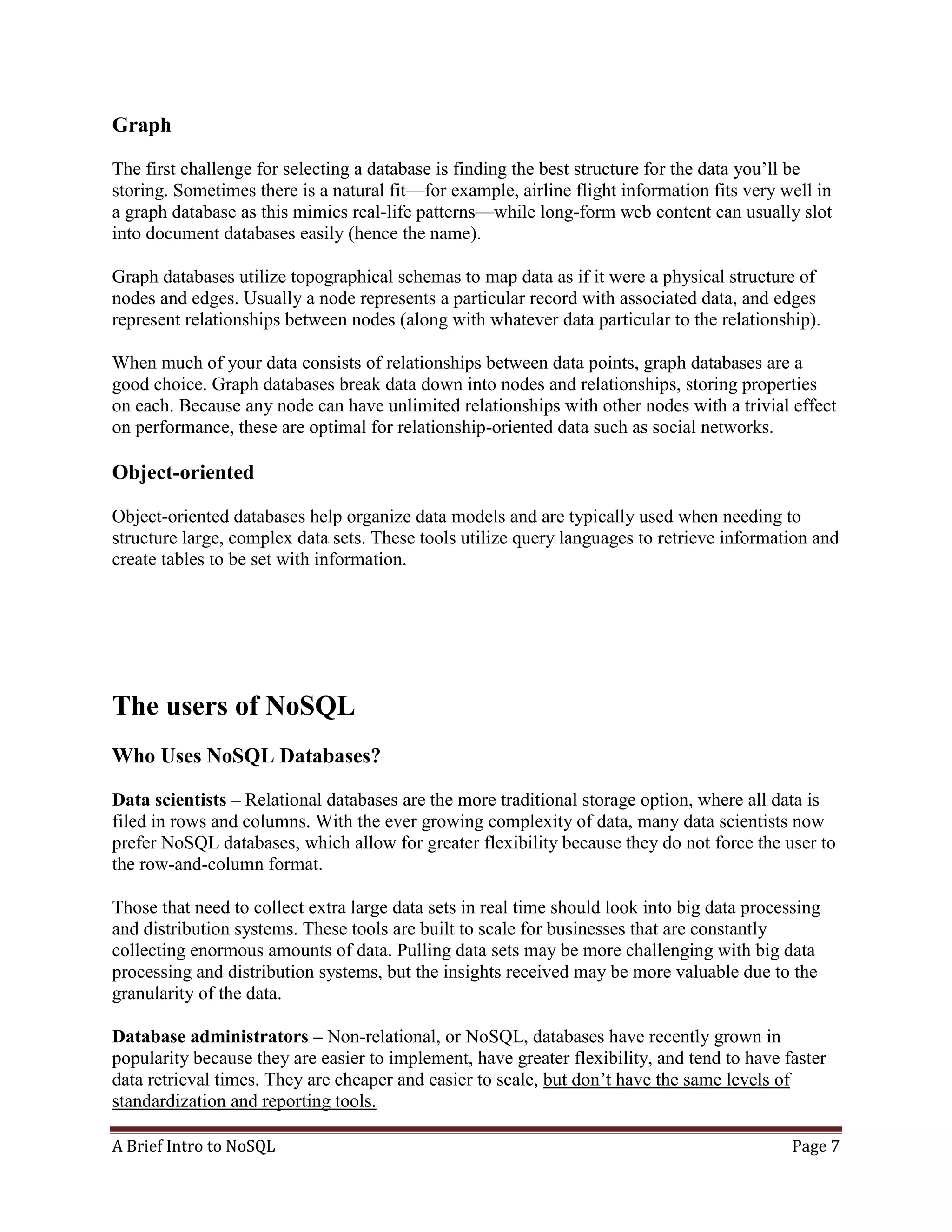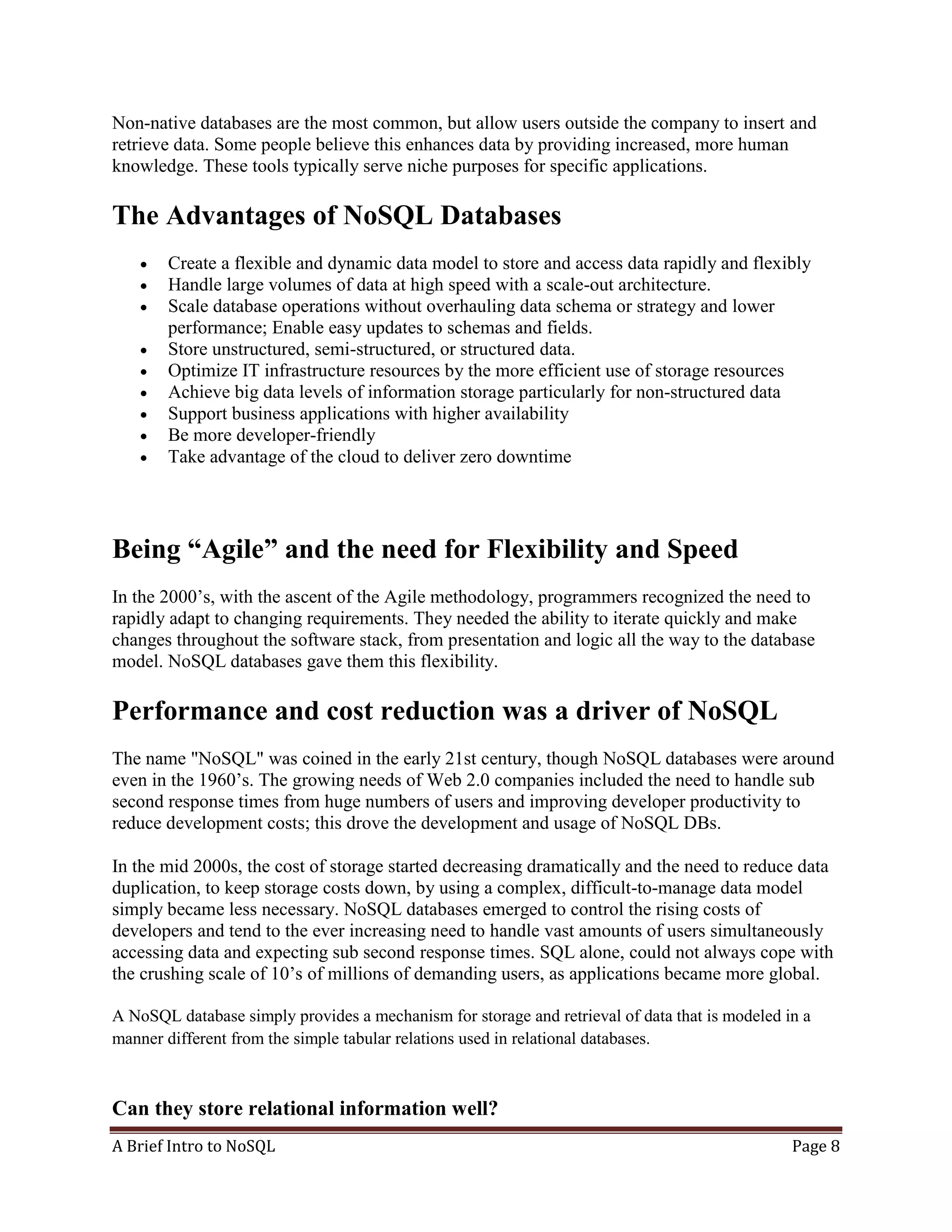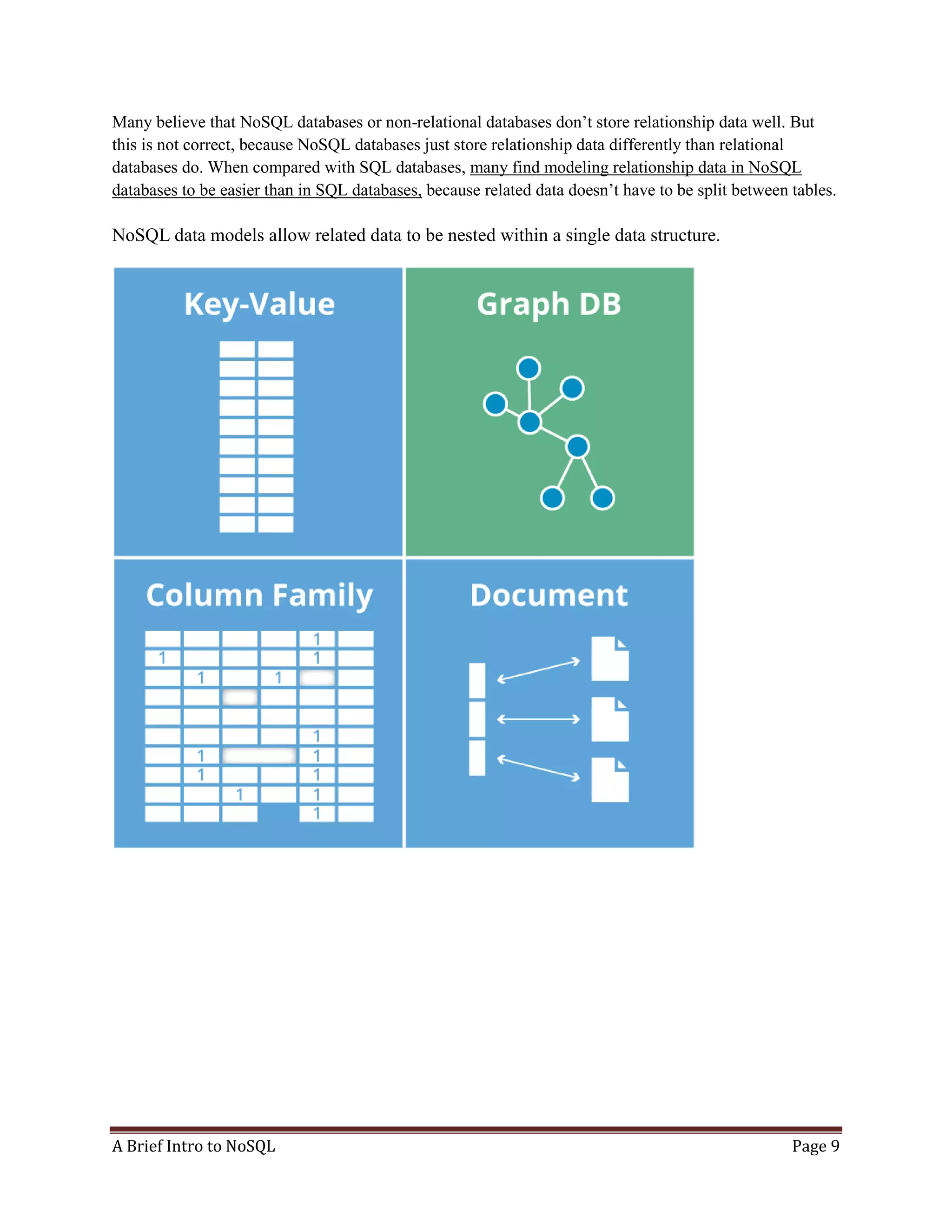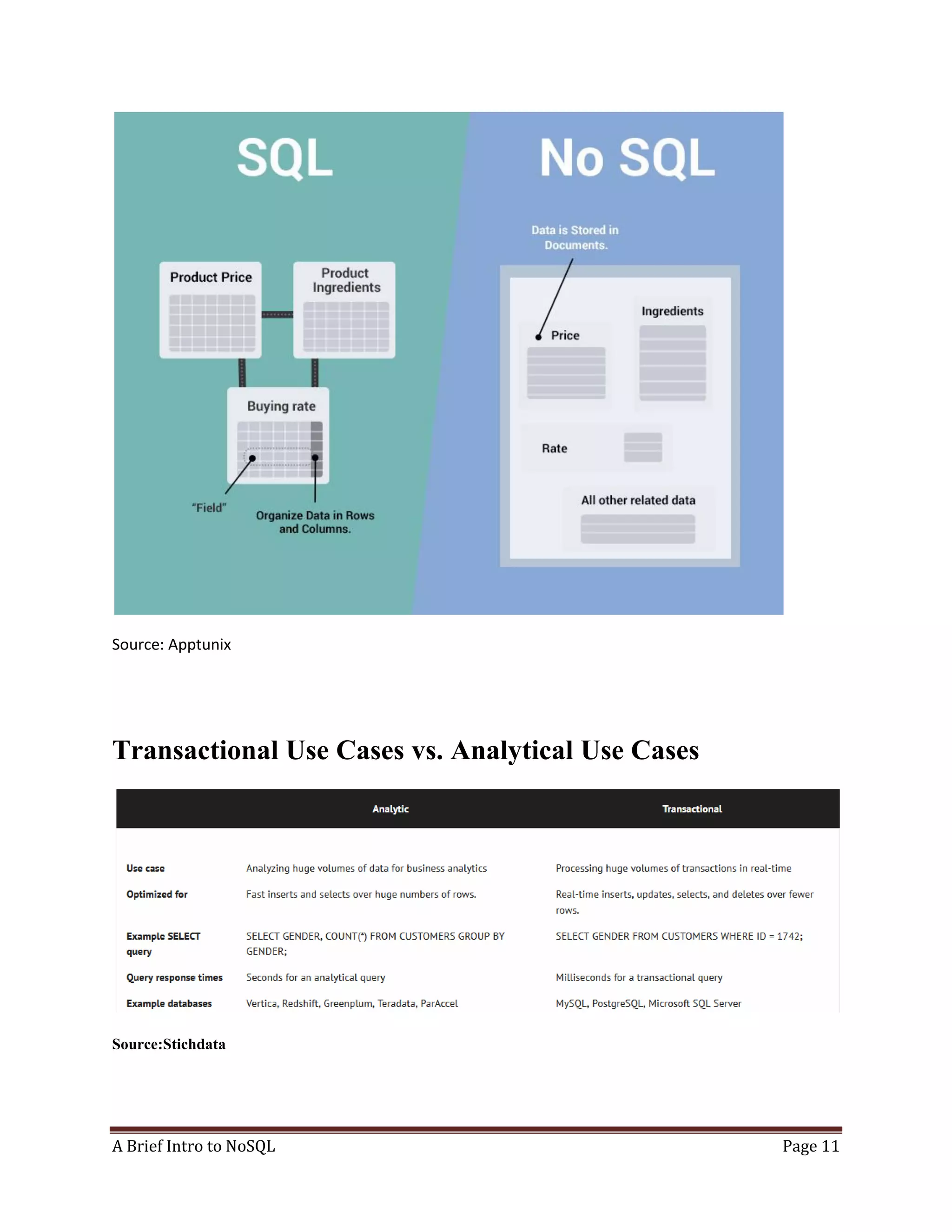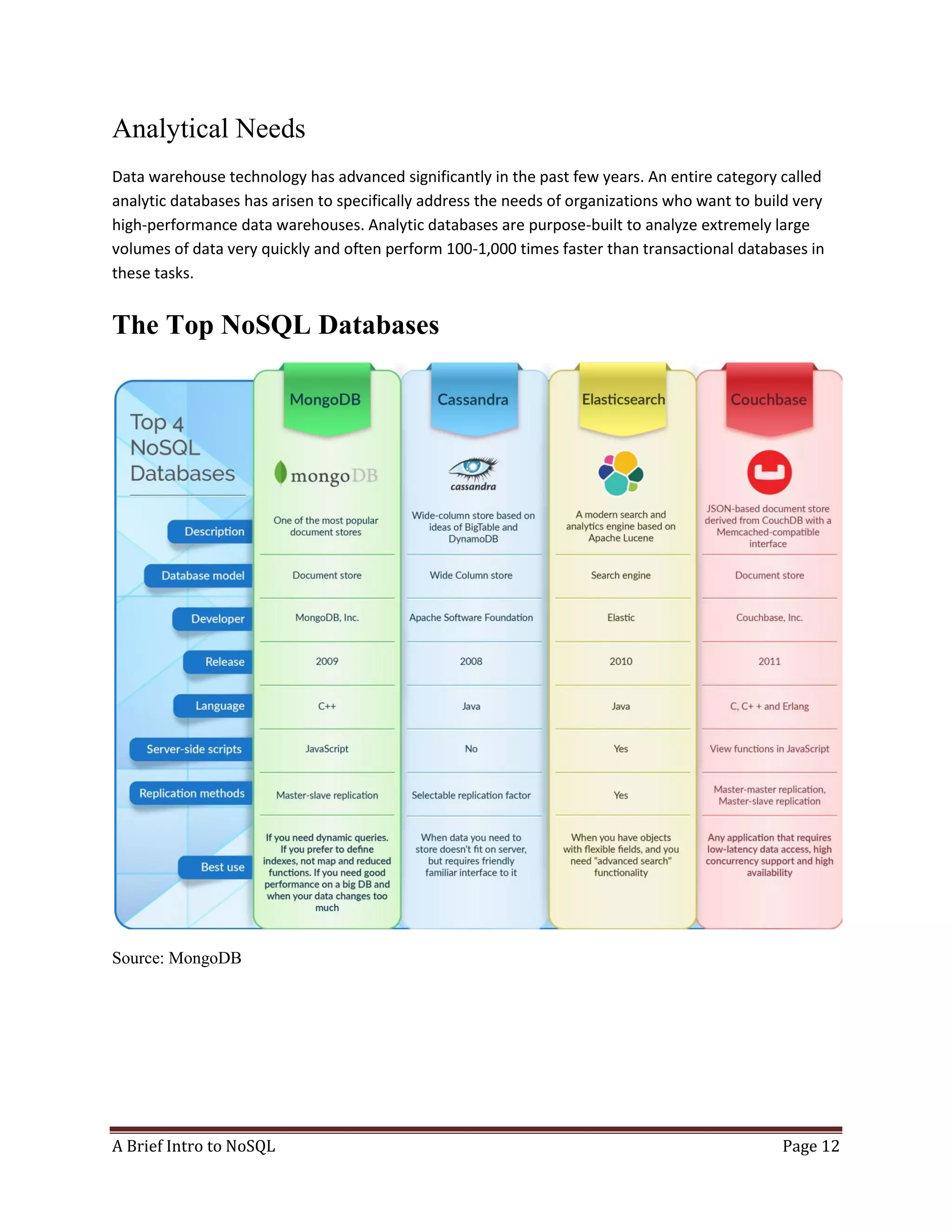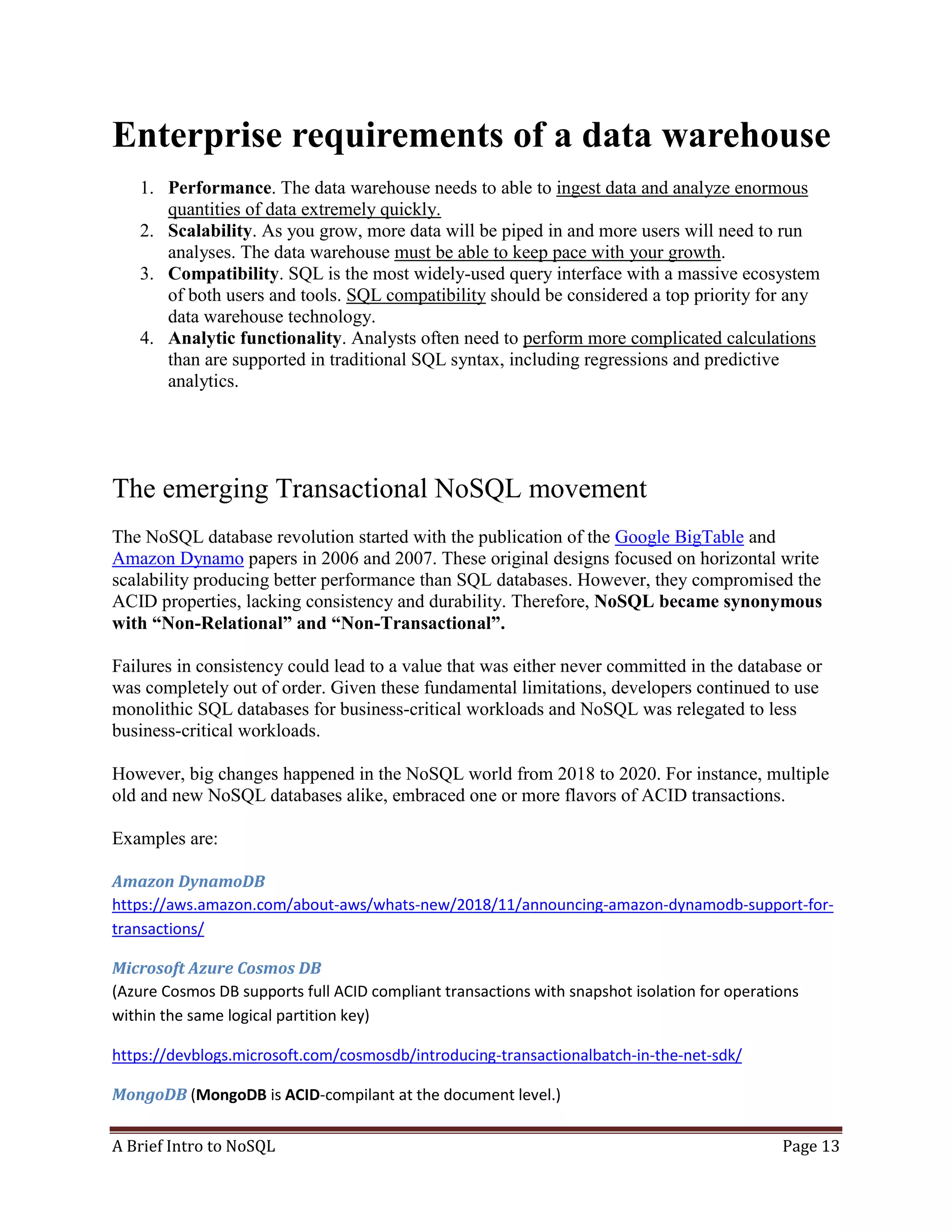The document provides an introduction to NoSQL databases, highlighting their flexibility, scalability, and performance advantages over traditional SQL databases. It details different types of NoSQL databases, such as document, key-value, and graph databases, and discusses their applications and user demographics. Furthermore, it touches upon the shift towards NoSQL due to the need for rapid adaptation in software development and the challenges of handling vast amounts of data.

